By TREVOR HOGG
By TREVOR HOGG
Images courtesy of HBO.
Dune: Prophecy pulls back the veil on the origins of the mysterious organization known as Bene Gessent founded by the two Harkonnen sisters with the goal of breeding a male messianic figure known as the Kwisatz Haderach, who has the ability to access genetic memory and bridge the gap between different eras. The HBO sci-fi series is set 10,000 years before the Dune feature films directed by Denis Villeneuve and consists of six episodes created by Diane Ademu-John and Alison Schapker that required approximately 2,500 visual effects shots by Important Looking Pirates, Accenture Song VFX, Image Engine, Raynault VFX, Rodeo FX, The Resistance, Futureworks and Territory Studio to achieve the desire scope and grandeur. Overseeing the digital augmentation was Michael Enriquez and Terron Pratt, both of whom previously worked on epic projects such as Foundation and Lost in Space, respectively.
“There was a refinement to what we shot [for the Bene Gesserit ritual], and we ended up lifting Sister Lila and replacing the entire world around her and choreographing the ancestors in a more gruesome way. At moments, the ancestors are almost morphing or splitting, with their hands coming out their arms, and double heads. There is this gruesome, monstrous component to the ancestors appearing before Sister Lila. We couldn’t do that monstrous form with what was shot. If you look carefully, every time the light would flash, the number and placement of the ancestors changes. The only way we could handle that was going full CG.”
—Michael Enriquez, VFX Supervisor
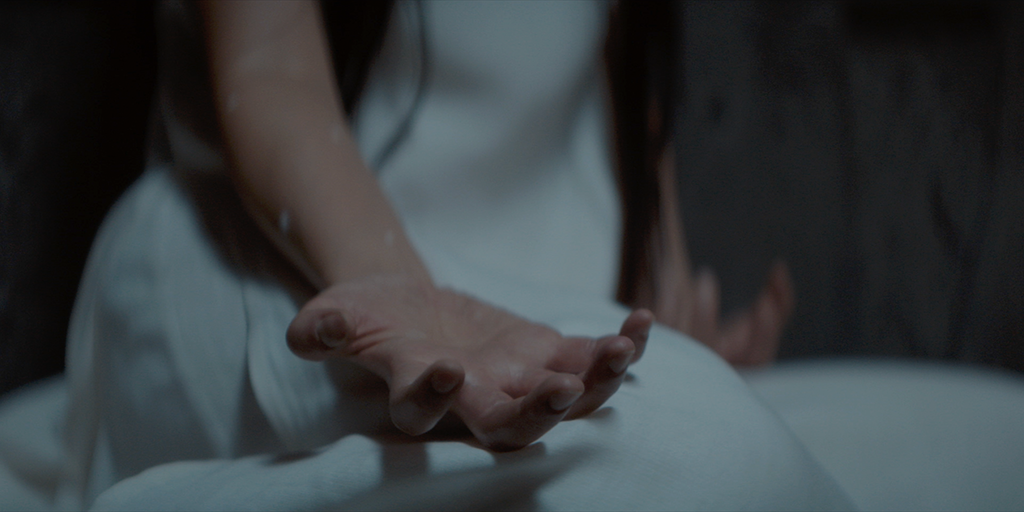
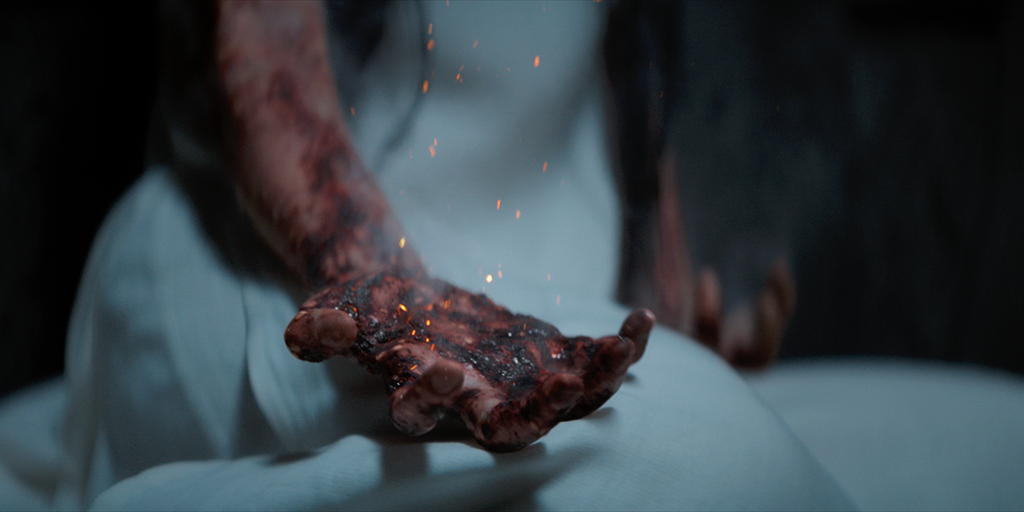
Imperium soldier Desmond Hart (Travis Fimmel) displays a terrifying ability to burn people alive through pyrokinesis.
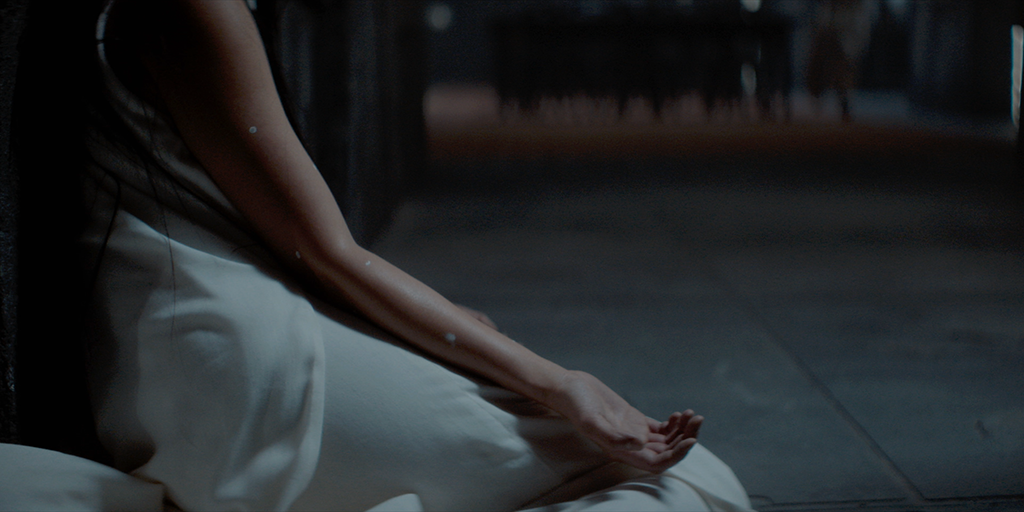
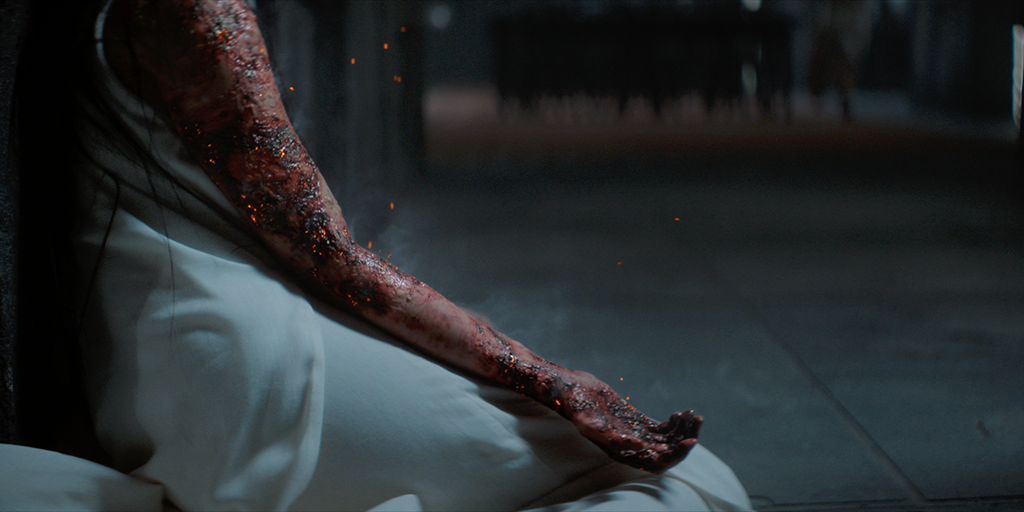
Contributing to the gruesomeness of the characters being burned alive are the flying embers and sparks being emitted by their skin.
“In Foundation, we did not necessarily have a box to play in,” states VFX Supervisor Michael Enriquez. “It was like, ‘We’re inventing this new world that no one has seen before.’ It was exciting but difficult to figure out a theme for that show. With Dune, there’s already such a rich visual language established by the features. It was interesting to live within that world but still tell a story that is 10,000 years removed from it. In a way, it tied our hands but also forced us to be more creative.” The time gap is not as large as one would think. “Because of this technical stagnation where computers and tech, for the most part, have been outlawed, everyone is returning to alternative ways of doing things,” Enriquez notes. “Technology hasn’t advanced. While culture and designs may have evolved the way they function in general, it’s exactly the same. We tried to give a slightly more antique vibe to certain components, but, in the end, they still use Holtzman Shields, spaceships and folding space tech to get around.”
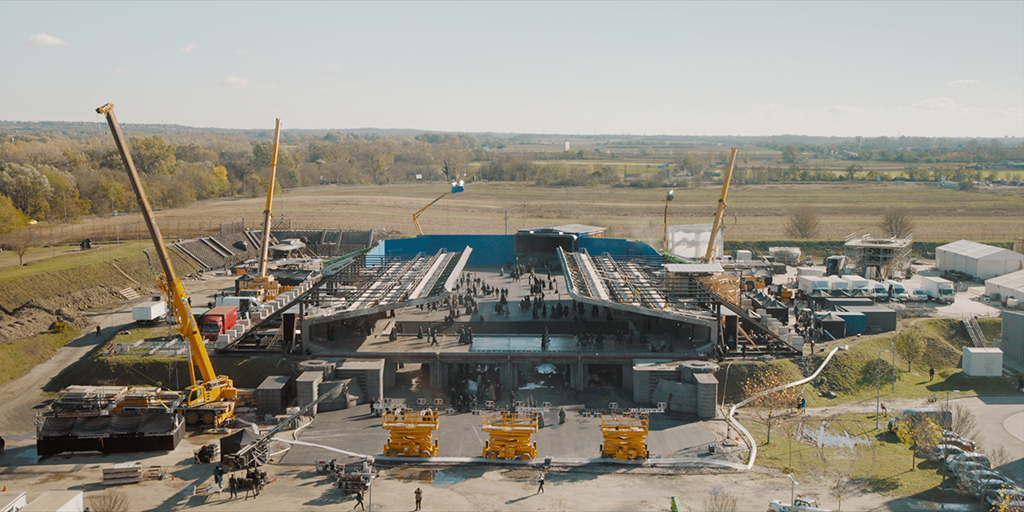
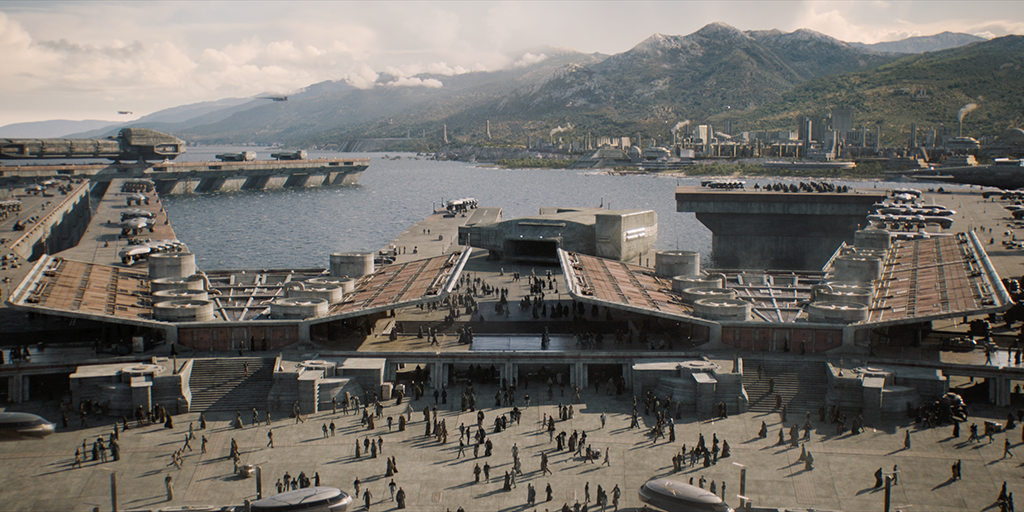
One of the biggest challenges for spaceports was to make sure there was enough activity taking place in the background to make the environments look believable and alive.
“I loved being able to work with Shai-Hulud [the sandworms] and put it in an environment that the audience hasn’t seen before. The first time we see Shai-Hulud is a combination Arrakis and the Sisterhood environment because it is a dream sequence. Image Engine did a fantastic job to bring Shai-Hulud to life and also creating dynamic effects simulations with Shai-Hulud breaching the sand and coming up through [it] and demolishing that sandcastle-like Sisterhood complex.”
—Terron Pratt, VFX Producer
The capability of a Face Dancer to shapeshift is demonstrated in-camera. “We tried to give it this intermediate stage so it’s not just Person A is going to Person B,” Enriquez remarks. “The character goes from the griffin character to this hairless, translucent figure and then to Sister Theodosia [Jade Anouka]. The shot we had to show it in was quite dark, so not a lot was to be seen, but there was a lot of thought process going into how to not make it like Michael Jackson’s ‘Black or White’ video where we were going from one person to another. We wanted to avoid that morph feeling and have it feel like an actual progression between two different stages.” Shapeshifting is painful. “We had extensive discussions with the director [Richard Lewis] and showrunner [Alison Schapker] in regards to this effect,” explains VFX Producer Terron Pratt. “We talked about what was needed for the actors to do on set to convey this pain and transformation. Then, in post, we took over areas to emphasize the pain and movement of the bones and the shifting of the structure underneath. It was technically challenging to get to that intermediate stage and for the audience to still understand what was happening without portraying this as a simple morph.”
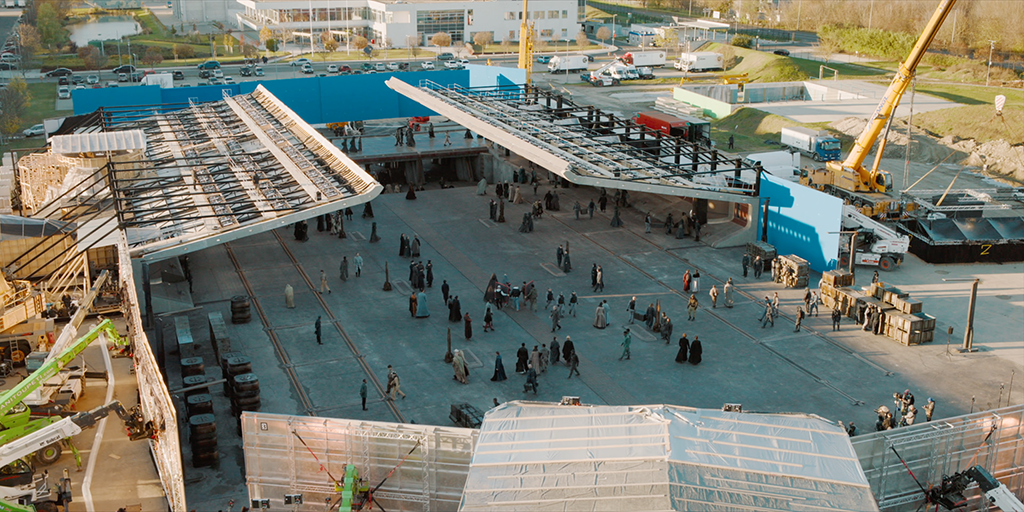
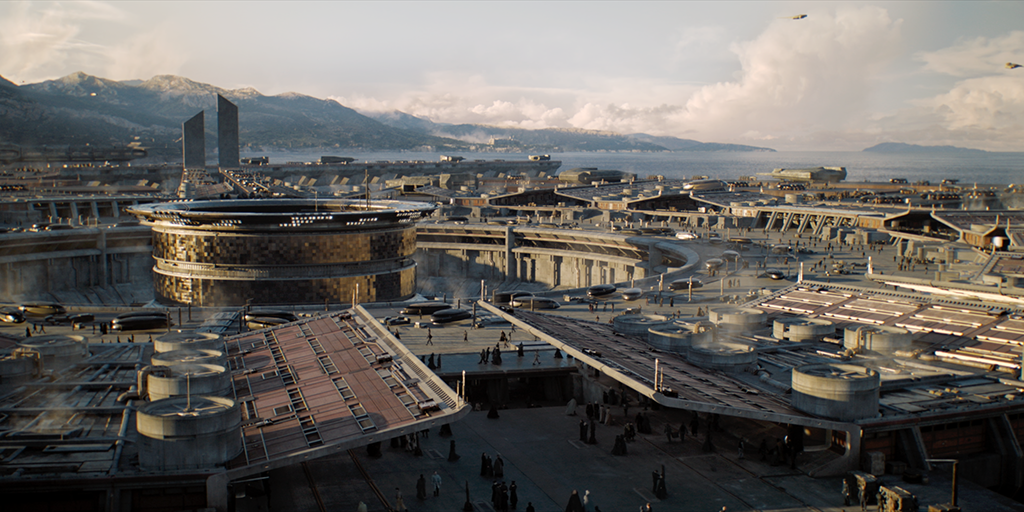
Even with the extensive practical sets, digital augmentation was required to get the necessary scope and scale.
Imperium soldier Desmond Hart (Travis Fimmel) displays a terrifying ability to burn people alive through pyrokinesis. “Desmond Hart burns about six people through the course of the season,” Pratt states. “There were a few instances where we utilized some prosthetics makeup later on in the series. The first two were all us. It’s a slow build as we start to burn the child. As a parent, it’s a difficult thing to figure out how we do this and present that idea without disturbing the audience in our first episode. We took that over completely in CG. We did a lot of matchmove and started to do that burning, emitting the steam and smoke from that character. That was carried much further as we get into Reverend Mother Kasha Jinjo [Jihae]; she is a bit more exposed. We can see the lava coming through the breaking skin, and particles of ash as well as charring and smoke coming up. It’s a visceral moment. We talk extensively about what point is this not believable? Someone is burning from the inside, which is inherently not believable, except for the fact that we set our limit so at the point where she exhales and smoke comes out of her mouth, we said, ‘She’s fully burned from the inside and her lungs are gone.’ Theoretically, your body can keep on burning; however, we don’t show that on the screen anymore.”
Advance technology takes the form of thinking machines. “It was a process because there’s no real precedent for the technology in Dune, and so much has been done on sci-fi robotics and tech,” Enriquez observes. “We had to try to figure out what that feels like. A jumping-off point were the descriptions of the Synx [empire ruled by thinking machines and cyborgs] during the Machine War [Butlerian Jihad]. They were described like crabs. The first thinking machines we see are flashbacks to the Machine War, and got that started while we began building our lizard. We wanted it to feel like a toy because we were trying to say that the Richese family, which has the lizard, is more permissive as far as thinking machine tech. There are parts of the galaxy that don’t care too much about the banishment because they feel thinking machines help their lives. There was so much variety in the type of tech that was being shown, we wanted to find a basic throughline that the audience would understand as a thinking machine. We decided that nothing in this world has blue lights except for thinking machines.”
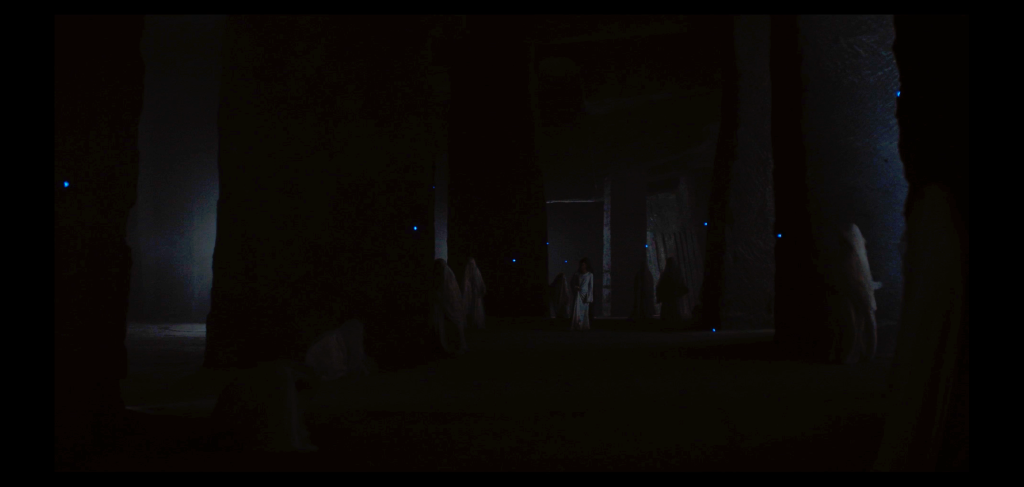
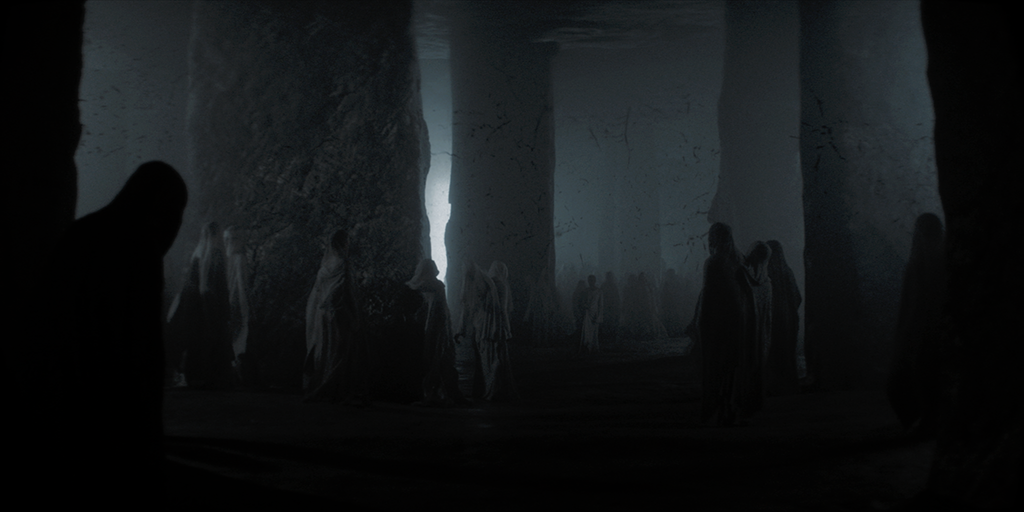
Dune: Prophecy takes place 10,000 years before Dune and Dune: Part Two.
“Rodeo FX did quite a big build [for the Imperial Palace], and it was challenging for them because the Imperial Palace has a fantastical look with the water gardens as well as the shape and scale. The spaceport was a challenge in a different way in terms of the number of people and amount of activity that always had to be going on. Accenture Song VFX did a great job on everything from our fly-ins to aerial and ground shots; it was hard to tell where the practical set ended and the CG extension began.”
—Michael Enriquez, VFX Supervisor
Sandworms make their presence felt in the drama during the breaching of the Shai-Hulud (Fremen’s reverent term for the sandworms). “Shai-Hulud is iconic for the Dune franchise, and being able to launch into that with our first episode meant we could start off strong, hit the audience with something they’re expecting to see, and then we can dig into the other stuff,” Pratt notes. “I loved being able to work with Shai-Hulud and put it in an environment that the audience hasn’t seen before. The first time we see Shai-Hulud is a combination Arrakis and the Sisterhood environment because it is a dream sequence. Image Engine did a fantastic job to bring Shai-Hulud to life and also create dynamic effects simulations with Shai-Hulud breaching the sand, coming up through [it] and demolishing that sandcastle-like Sisterhood complex.”
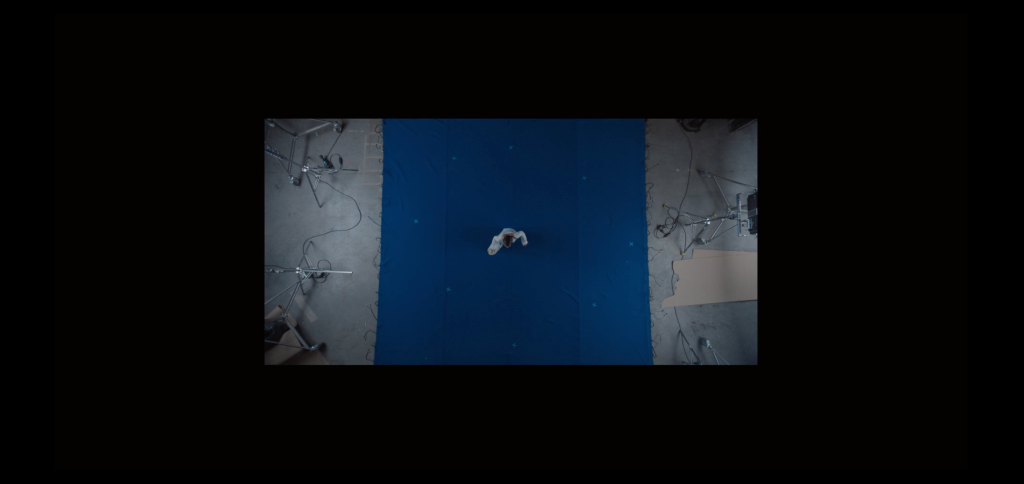
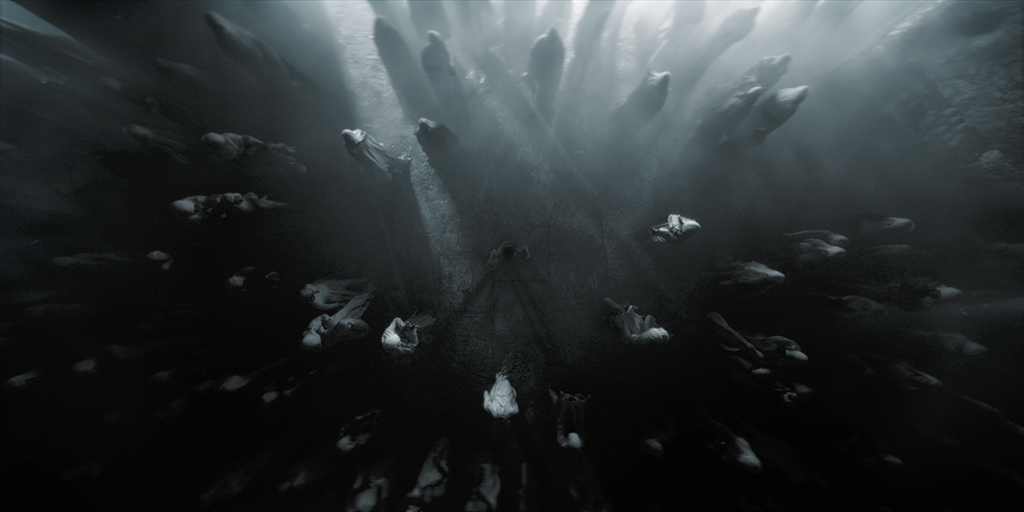
Some of the most disturbing imagery has an almost haunting charcoal aesthetic.
The Imperial Palace and spaceport on Kaitain were significant asset builds. “They were both big environments for us, with the amount of detail that needed to be there, because our cameras were flying all over the place, especially on the Imperial Palace,” Enriquez states. “We didn’t have much of a location for the Imperial Palace except near the entrances where there were a couple of vertical structures. Otherwise, it was a 100% CG. Rodeo FX did quite a big build, and it was challenging for them because the Imperial Palace has a fantastical look with the water gardens as well as the shape and scale. The spaceport was a challenge in a different way in terms of the number of people and amount of activity that always had to be going on. Accenture Song VFX did a great job on everything from our fly-ins to aerial and ground shots; it was hard to tell where the practical set ended and the CG extension began. At times, we needed to have people walking in clusters or there were too many single people. It was a lot of choreographing of action and general background.”
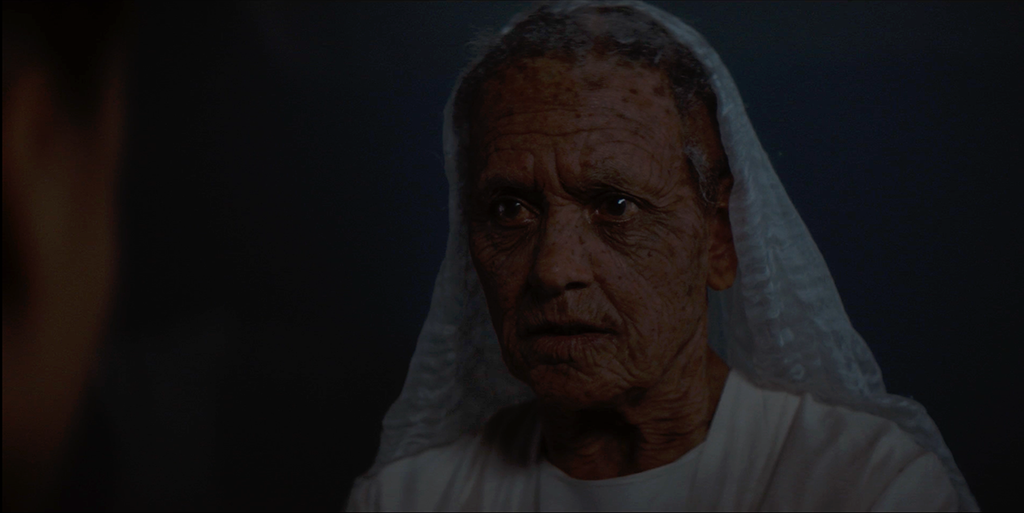
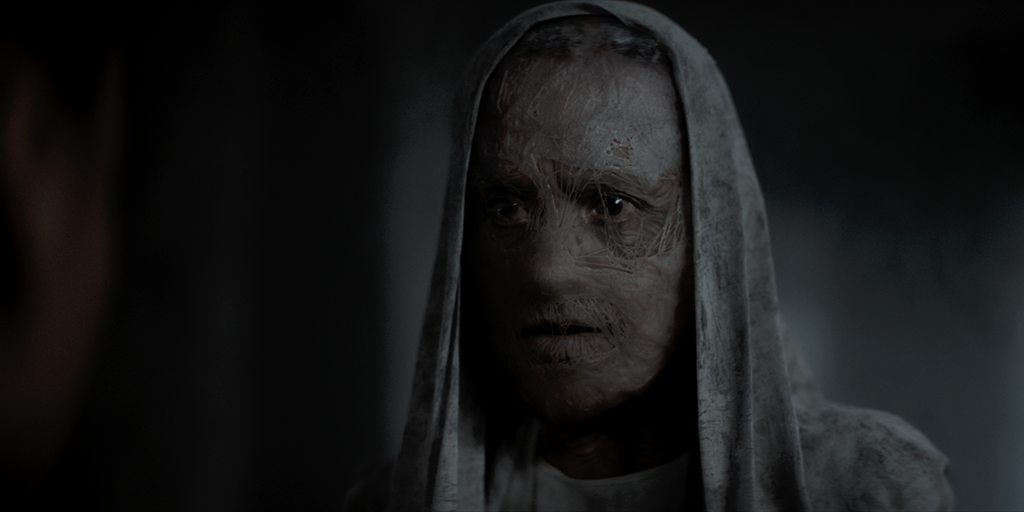
Prosthetic makeup could not be entirely relied upon and required some digital assistance.
Getting planetary introductions are Lankiveil and Wallach IX. “It was nice to get into the sandbox that was all our own,” Pratt remarks. “We started with a tremendous amount of concept design by Tom Meyer [Production Designer] and his team. There was a distinct look between the two planets, which had to feel desolate and almost uninhabitable. Interestingly, Lankiveil was shot a couple of hours away from our stages in Budapest, and it happened to be lightly snowing. It was genuinely cold, and there was snow on the ground, although we enhanced that with special effects snow falling. Small structures were built into a side of a mountain, and we expanded that and carried that look down to the fishing village, which was actually shot in a quarry that had a mound and some structures built out to provide a shoreline. We expanded that with matte paintings and extensive 3D work with effects water and distant ships out on the horizon.” Wallach IX was also shot in a quarry outside of Budapest, which served as the environmental foundation. “We had these big multi-tiered rock walls, and the spaceport area was built on one of the lower levels,” Pratt states. “From there, we decided on the orientation of the complex that was going to be on one of the upper levels and built our surrounding environment to match the quarry. Ultimately, we took over a good percentage of that quarry, but it was good to have established the look in-camera.”
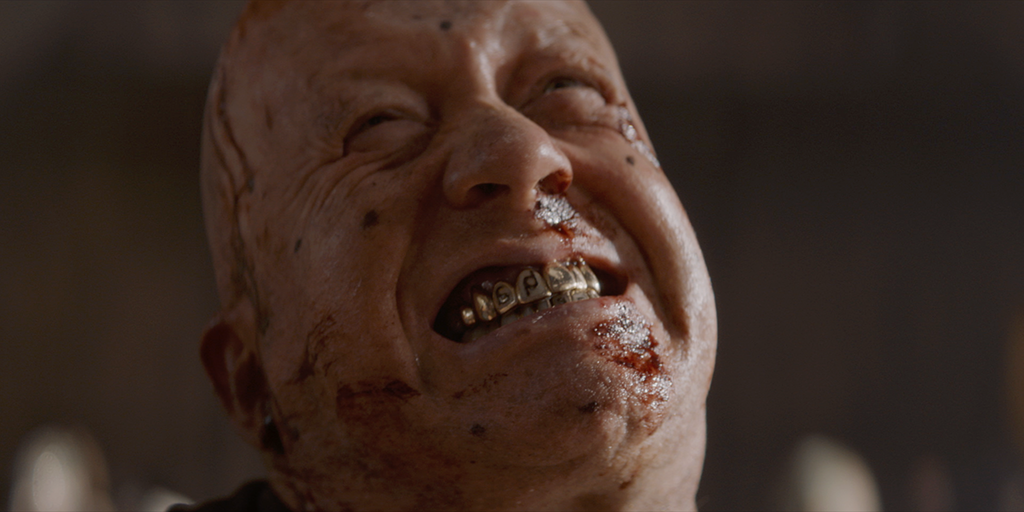
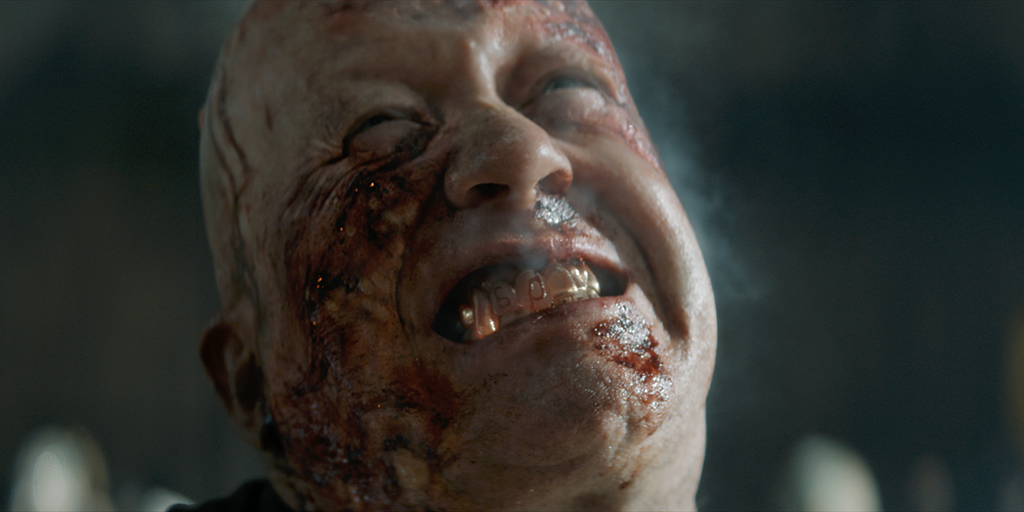
Smoke was added to emphasize the fact that the character is burning from the inside out.
Zimia City on Salusa Secundus is a prominent setting. “We tried to figure out how much of Zimia City had to be built out because one of the most challenging things to do artificially is ground-level city work,” Pratt observes. “There is so much detail and so many things that have go in to making it feel believable. Thankfully, for this season, most of time when we are in Zimia City it’s flyovers, and we only had one scene that took place at ground level – when Valya Harkonnen [Emily Watson] goes to visit her family. Tom gave us a ton of concepts for buildings and the general layout of the city. We ran with it and tried to figure out the exact locations of where things are so the connecting shots of cars driving to and from made sense in terms of geography. We fleshed out the city enough that it gave us everything that was needed for this season. We still didn’t go crazy as far as building an entire city where you can go and land on the ground level. Zimia City ended up being much more efficient than I feared it would be.”
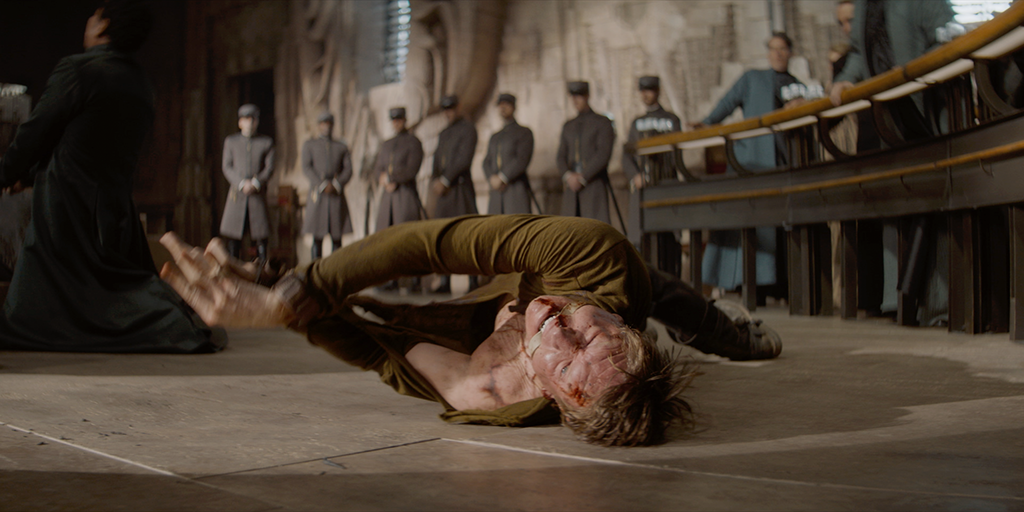
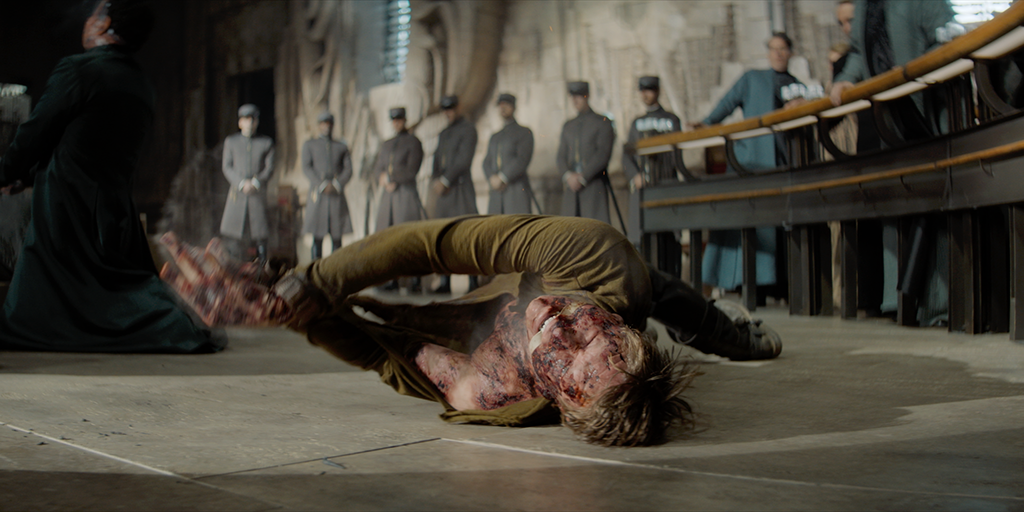
Much of the bloodwork was achieved in post-production.
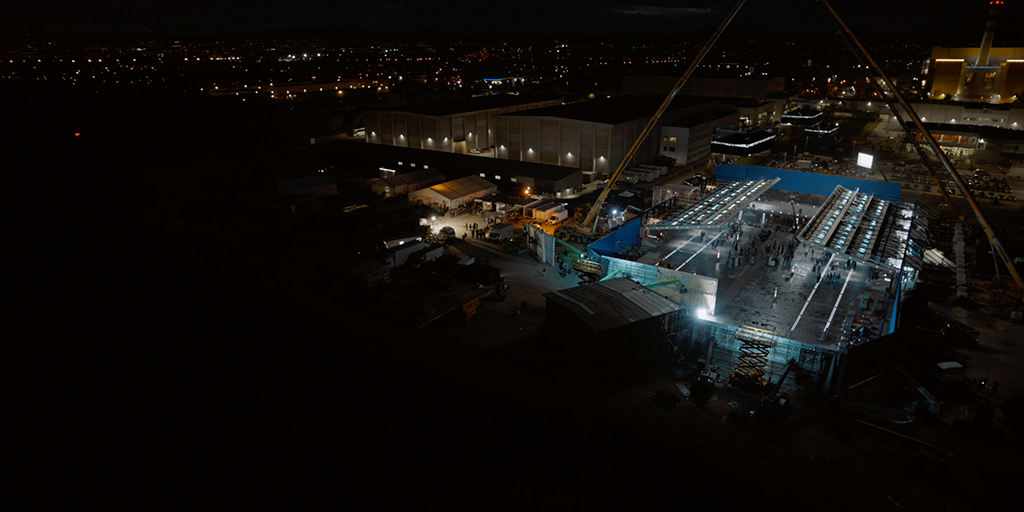
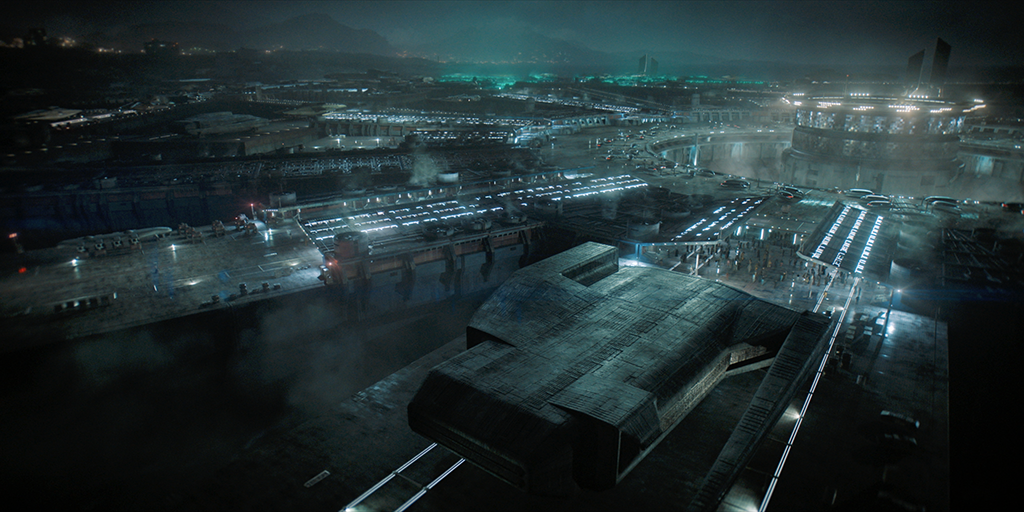
A diffused, misty lighting gives an ethereal quality to the shot.
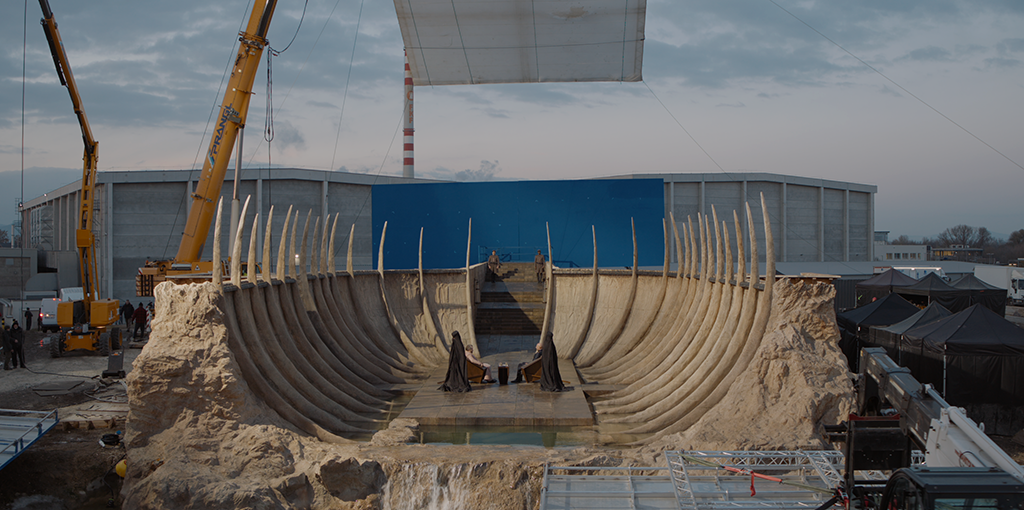
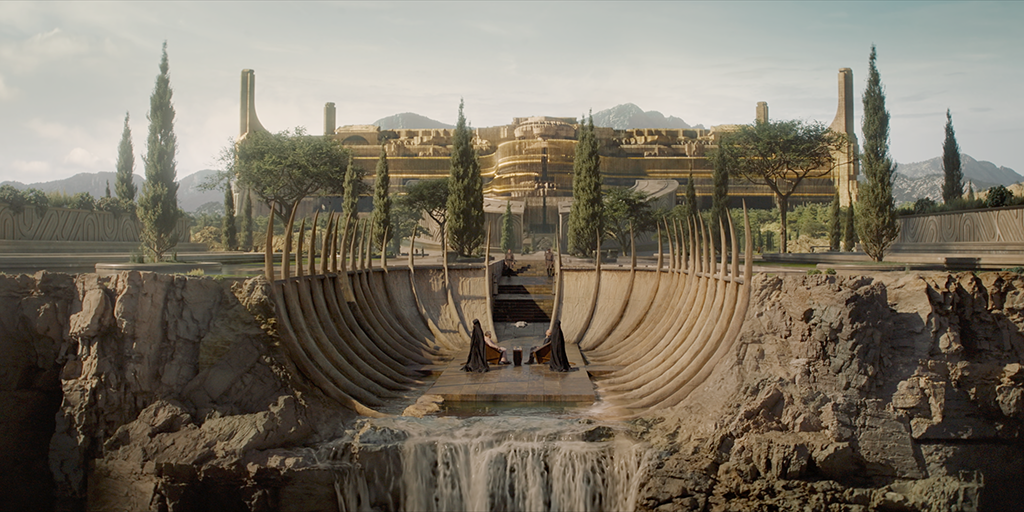
A significant asset build was the Imperial Palace.
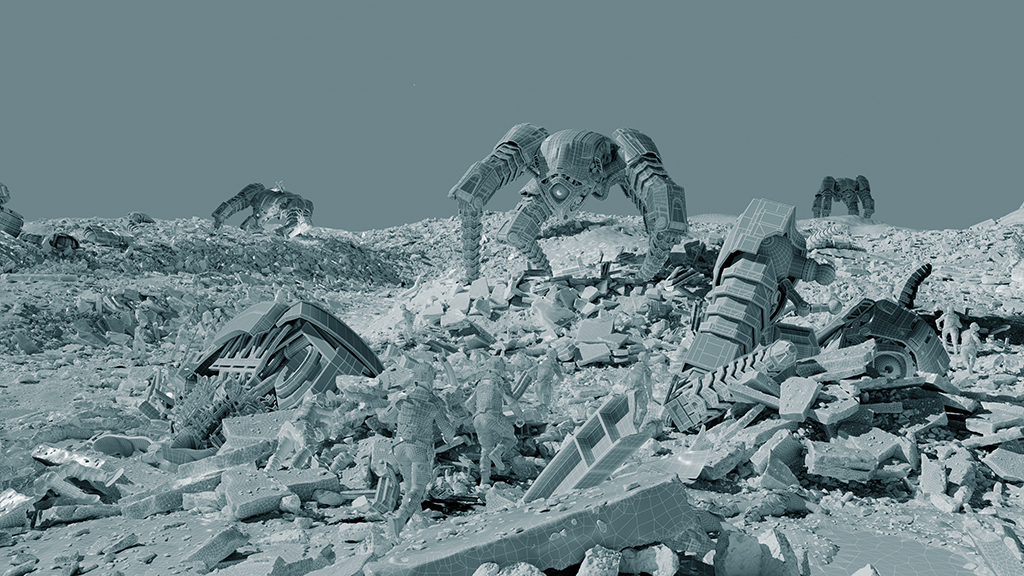
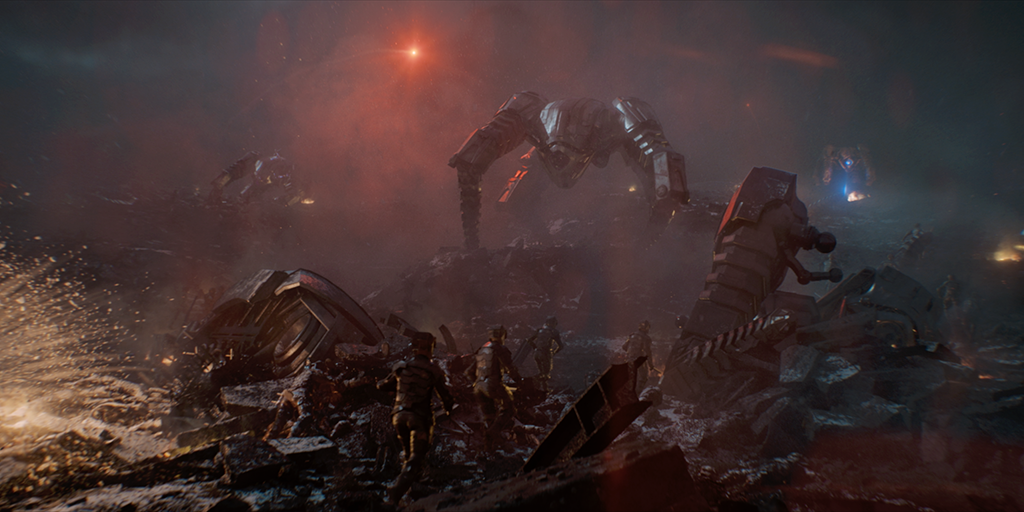
A flashback to the Machine War otherwise known as the Butlerian Jihad.
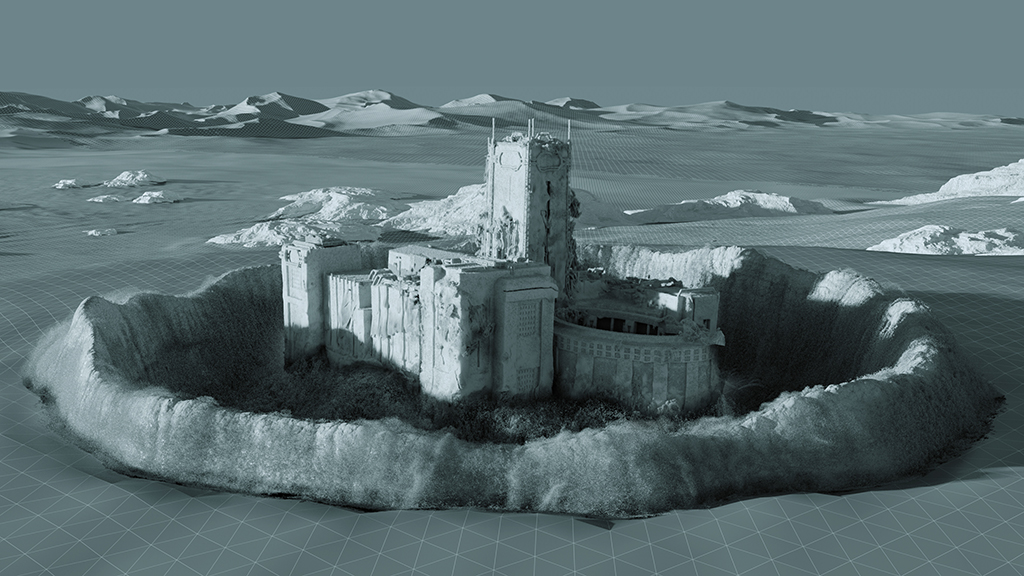
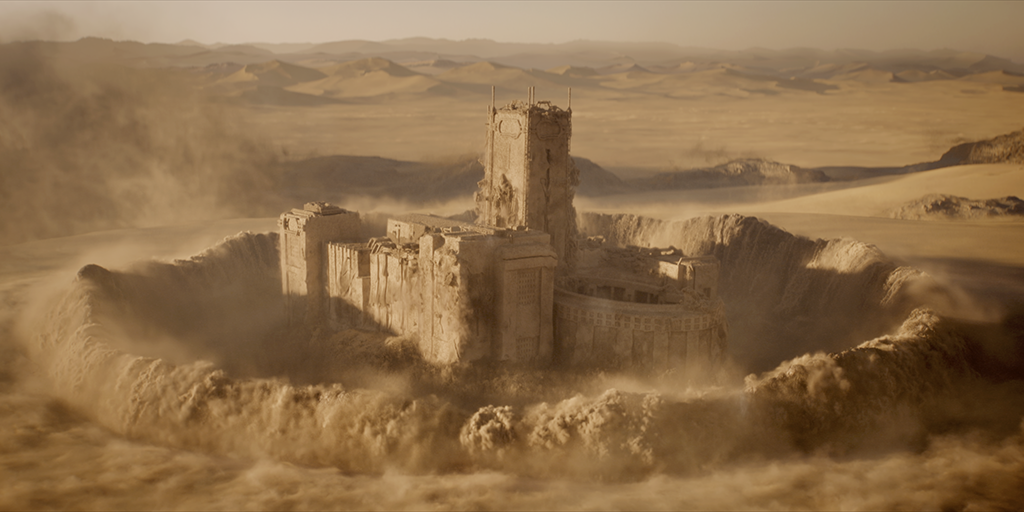
In a dream sequence, the Shai-Hulud breaches the Sisterhood complex, which is made out of sand.
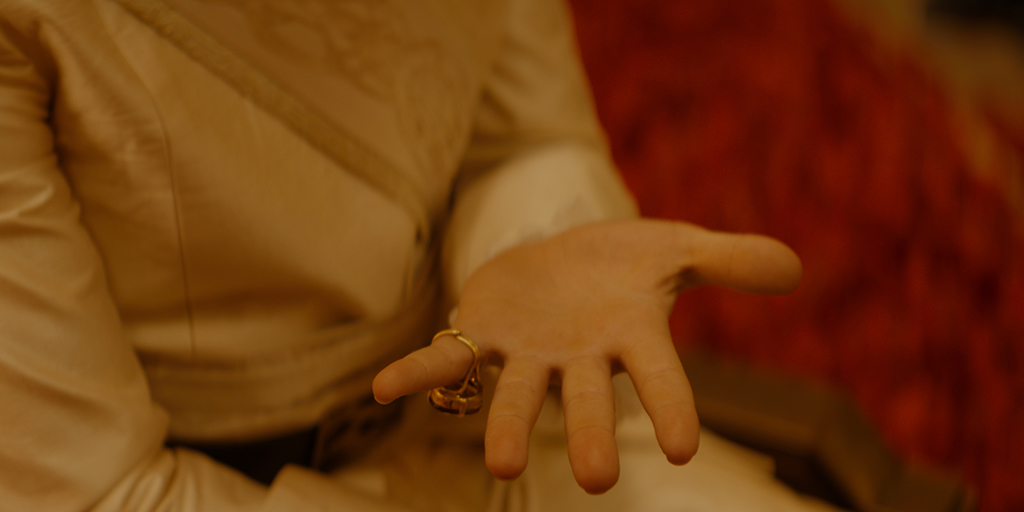
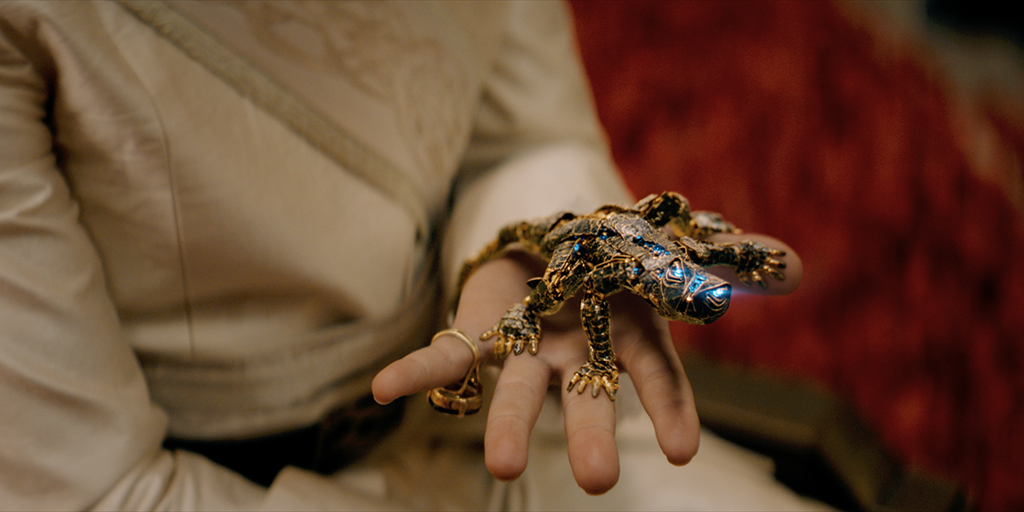
Blue lights were a signature visual cue for the thought machines.
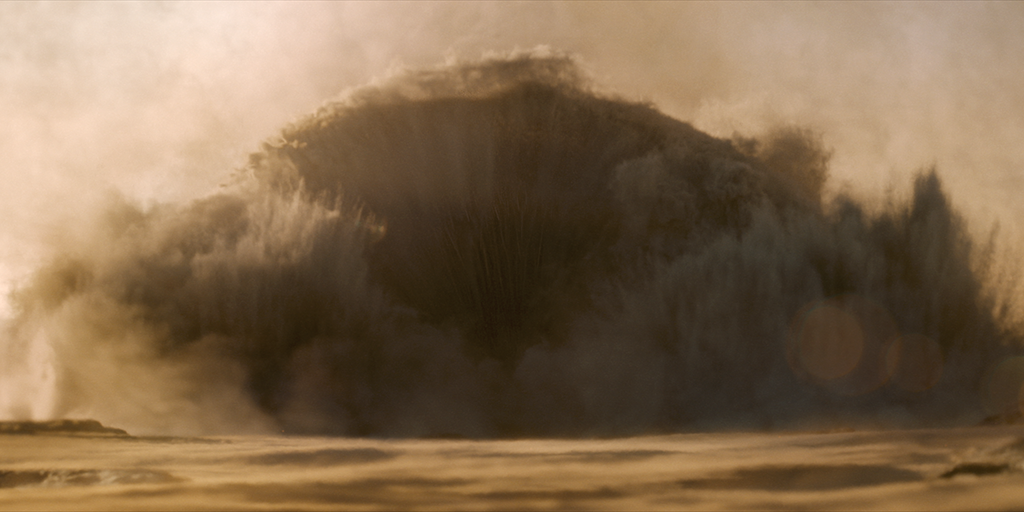
Sandworms make their presence felt in Episode 101.
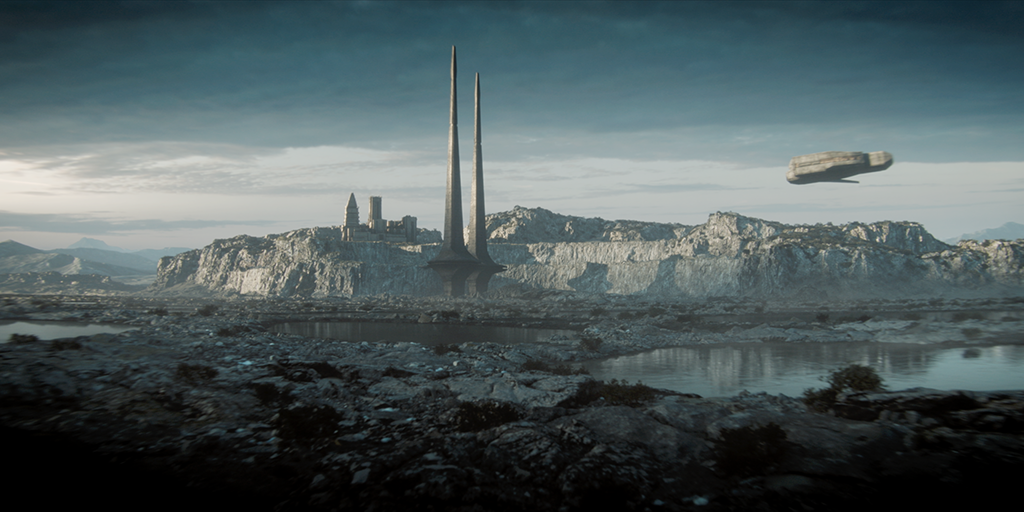
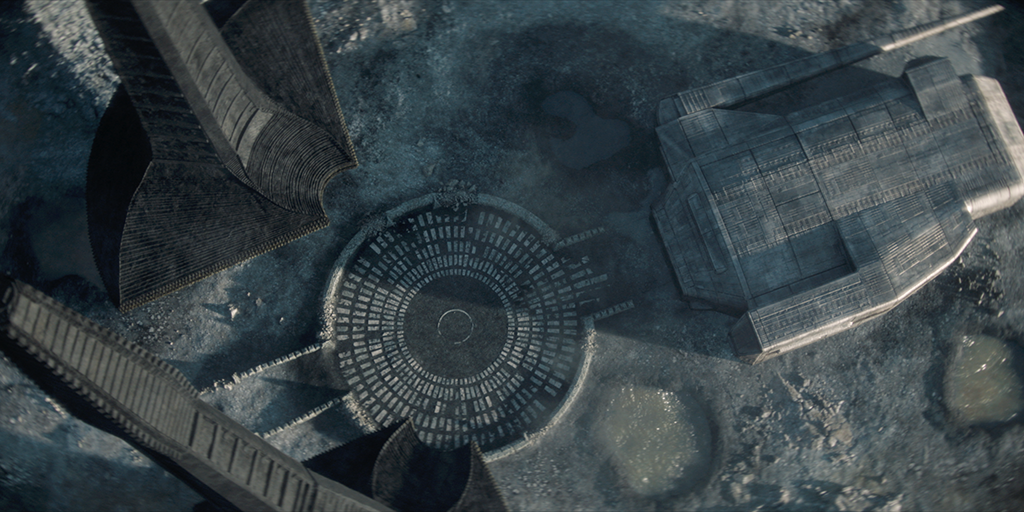
Wallach IX is a desolate planet shot in a quarry outside Budapest, with the spaceport located at a lower tier.
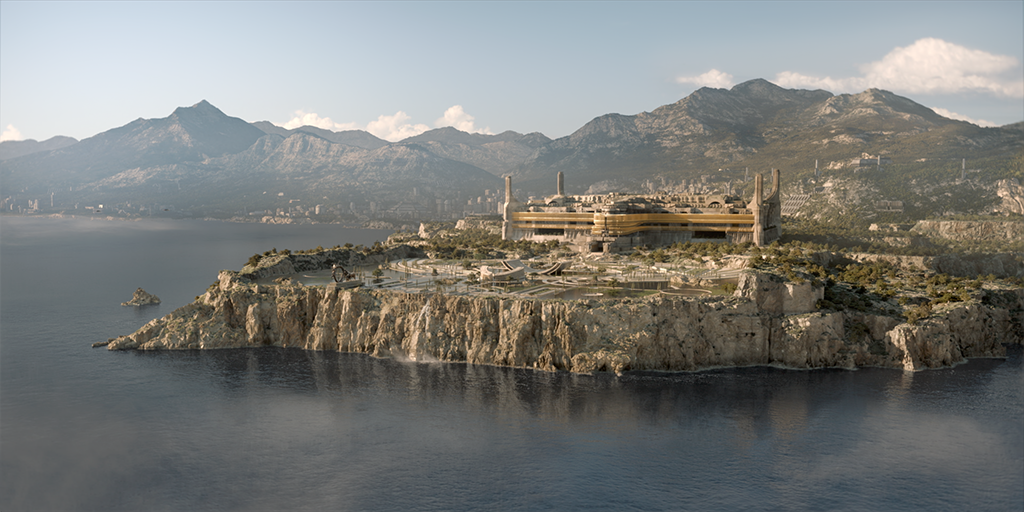
Approximately 2,500 visual effects shots were created for Dune: Prophecy.
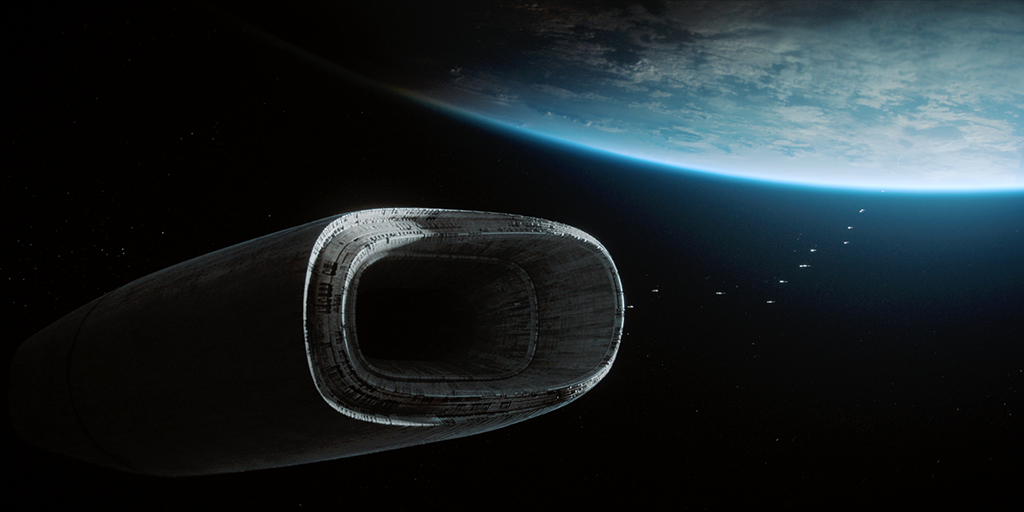
Given the ban on technology, the visual language of Dune: Prophecy is not radically different to the feature films.
Living up to its name is the Bene Gesserit ritual known as the Agony where Sister Lila [Chloe Lea] consumes the Water of Life, which unlocks her genetic memory and, in the process, she becomes a Reverend Mother. “We formulated a plan, which was shot to the best of our abilities, and as the cut was being put together, we realized this wasn’t what the show needed,” Enriquez reveals. “There was a refinement to what we shot, and we ended up lifting Sister Lila and replacing the entire world around her and choreographing the ancestors in a more gruesome way. At moments, the ancestors are almost morphing or splitting, with their hands coming out their arms, and double heads. There is this gruesome, monstrous component to the ancestors appearing before Sister Lila. We couldn’t do that monstrous form with what was shot. If you look carefully, every time the light would flash, the number and placement of the ancestors changes. The only way we could handle that was going full CG. I’m happy with how it turned out.”